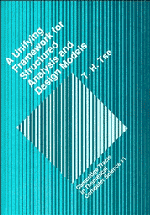 A Unifying Framework for Structured Analysis and Design Models
A Unifying Framework for Structured Analysis and Design Models Book contents
- Frontmatter
- Contents
- Preface
- List of Tables and Figures
- Chapter 1 Introduction
- Chapter 2 Desirable Features of Systems Development Environments
- Chapter 3 A Comparison with Related Work
- Chapter 4 An Initial Algebra Framework for Unifying the Structured Models
- Chapter 5 A Functorial Framework for Unifying the Structured Models
- Chapter 6 The Identification of Unstructuredness
- Chapter 7 A Prototype System to Implement the Unifying Framework
- Chapter 8 Conclusion
- Bibliography
- Index
Chapter 7 - A Prototype System to Implement the Unifying Framework
Published online by Cambridge University Press: 28 January 2010
- Frontmatter
- Contents
- Preface
- List of Tables and Figures
- Chapter 1 Introduction
- Chapter 2 Desirable Features of Systems Development Environments
- Chapter 3 A Comparison with Related Work
- Chapter 4 An Initial Algebra Framework for Unifying the Structured Models
- Chapter 5 A Functorial Framework for Unifying the Structured Models
- Chapter 6 The Identification of Unstructuredness
- Chapter 7 A Prototype System to Implement the Unifying Framework
- Chapter 8 Conclusion
- Bibliography
- Index
Summary
All this will not be finished in the first one hundred days. Nor will it be finished in the first one thousand days, … But let us begin.
—John F. Kennedy (1961)INTRODUCTION
In this chapter, we shall give an illustration of the practical usefulness of our framework. We shall discuss a prototype system which has been developed to implement the structured tasks. It has been implemented on a Macintosh using Turbo Pascal. It enables the user to draw a hierarchy of DeMarco-like task diagrams and stores them as structured tasks, which are stored physically in the form of pointers and linked lists. It helps the user to review the task diagrams to an appropriate level of detail, and zoom in/zoom out to lower/higher levels through refinements and abstractions as required. Given an incomplete task specification, the system prompts the user to define further details of his design considerations. For example, if the user wants to build a hierarchical structure into a flat task diagram, he will be prompted to supply the necessary details such as the names of intermediate levels. Given a hierarchy of task diagrams, the system then transforms them automatically into a term algebra, a Yourdon structure chart and also Jackson structure text. An example of an application of the system will be given in Section 7.2. An overview of the system with examples of its algorithms will be given in Section 7.3.
- Type
- Chapter
- Information
- A Unifying Framework for Structured Analysis and Design ModelsAn Approach Using Initial Algebra Semantics and Category Theory, pp. 115 - 165Publisher: Cambridge University PressPrint publication year: 1991


